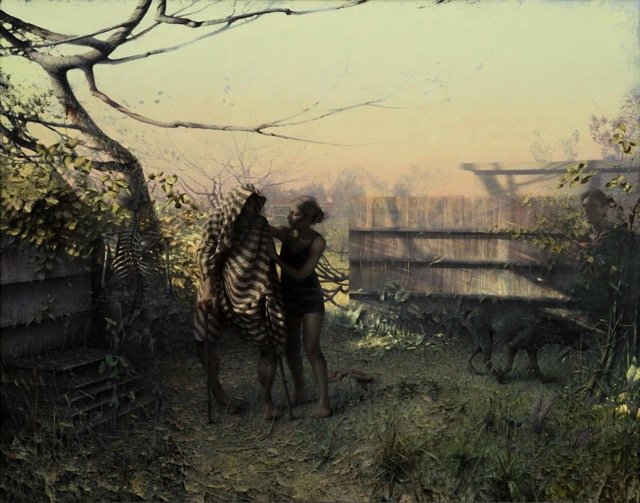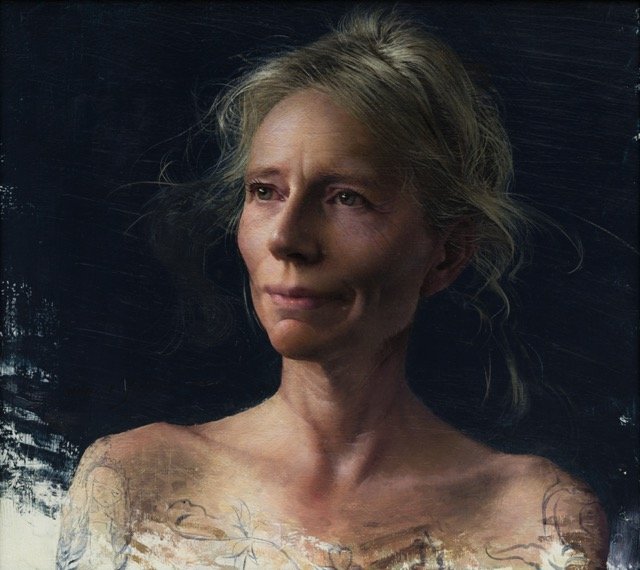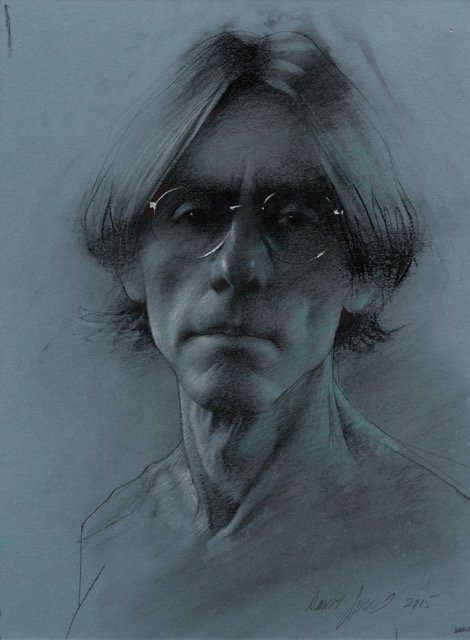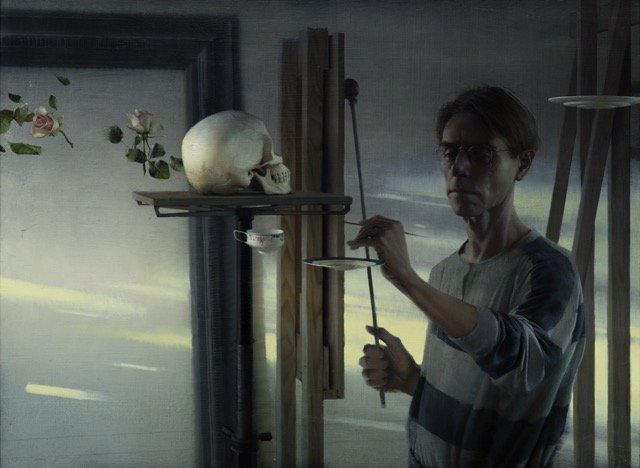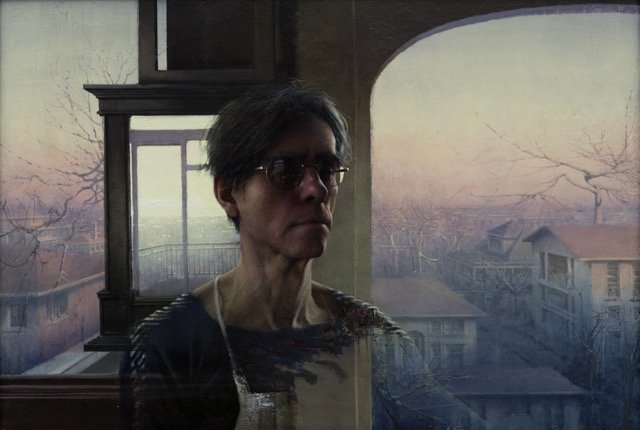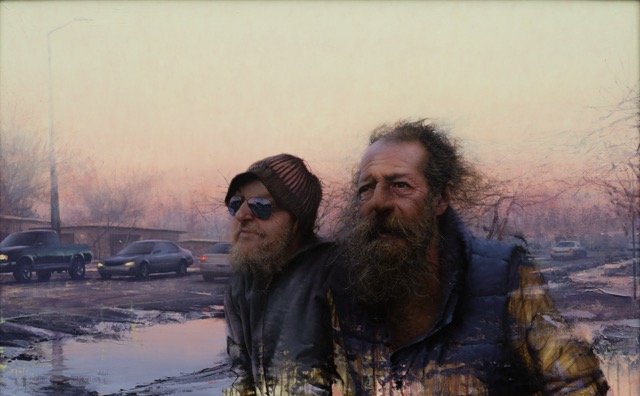Fleeting Presence: The Liminal Art of Daniel Sprick
On view through July 31, 2024
About the Exhibition
Organized by a cohort of sixteen students from the School of Art & Art History at the University of Denver, this exhibition explores formal and thematic tensions in the work of Colorado artist Daniel Sprick. Through his adept handling of form, space, color, and light, Sprick creates hauntingly beautiful paintings rooted in the realism of Dutch artists like Johannes Vermeer. His paintings reflect our world back to us, but it’s a world imbued with hints of melancholy and hidden meaning. Embracing ambiguity, Sprick’s art brings together seeming opposites – life and death, stillness and dynamism, transience and permanence – transforming our everyday existence into something magical and mysterious.
Curated by: Lauren Anuszewski, Sydney Barofsky, Alex Blom, Seb Brady, Lexi Ferenzi, Morgan Fleetwood, McKenna Gale, James Grau, Allene Leak, Patrick Lucas, Sydney McCain, Anna McDonald, Claire Motsinger, Andrew Nadeau, Emily Oxford-Pickeral, and Jordan Reed.
The exhibition has been extended through July 31, 2024.
Interiors
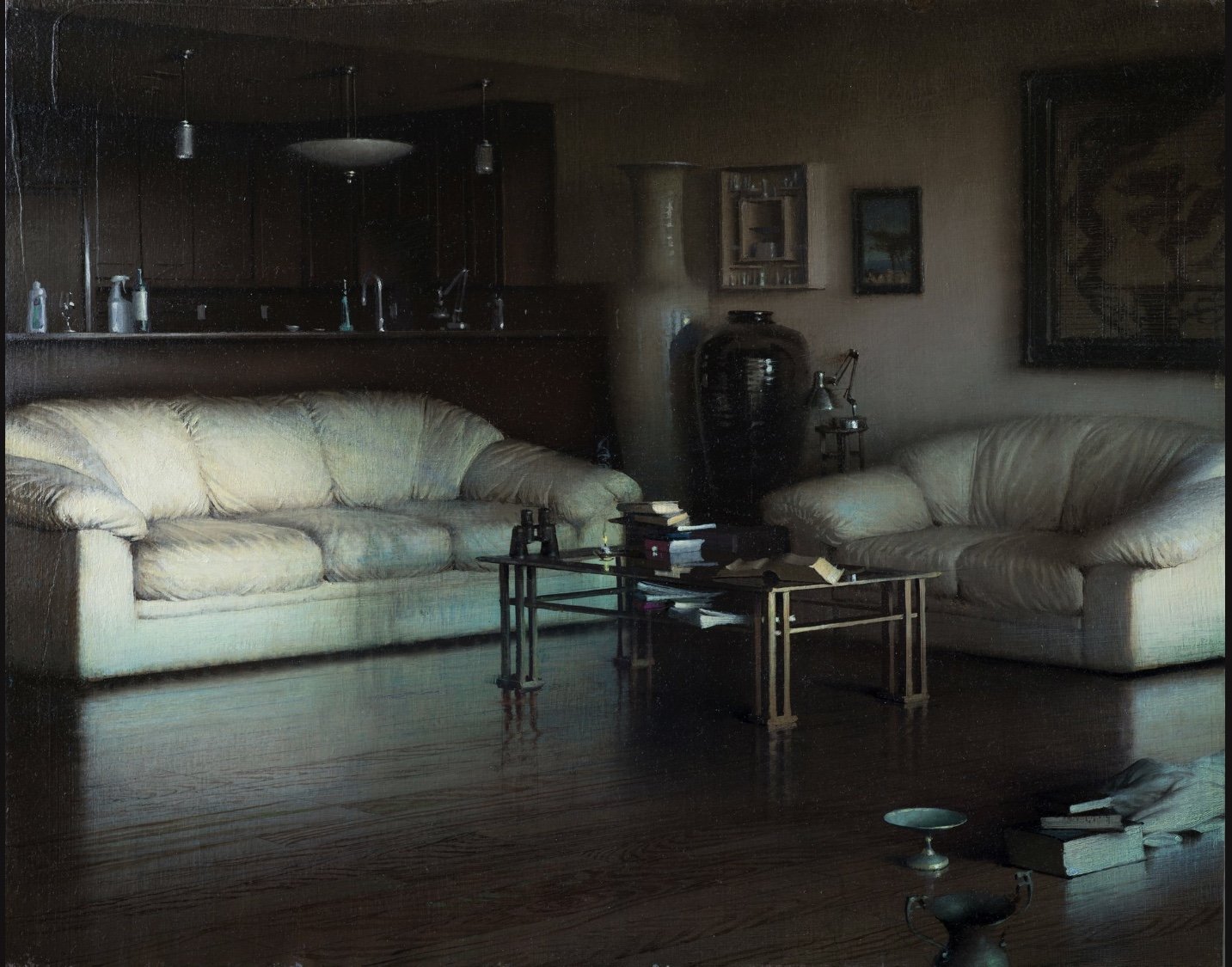
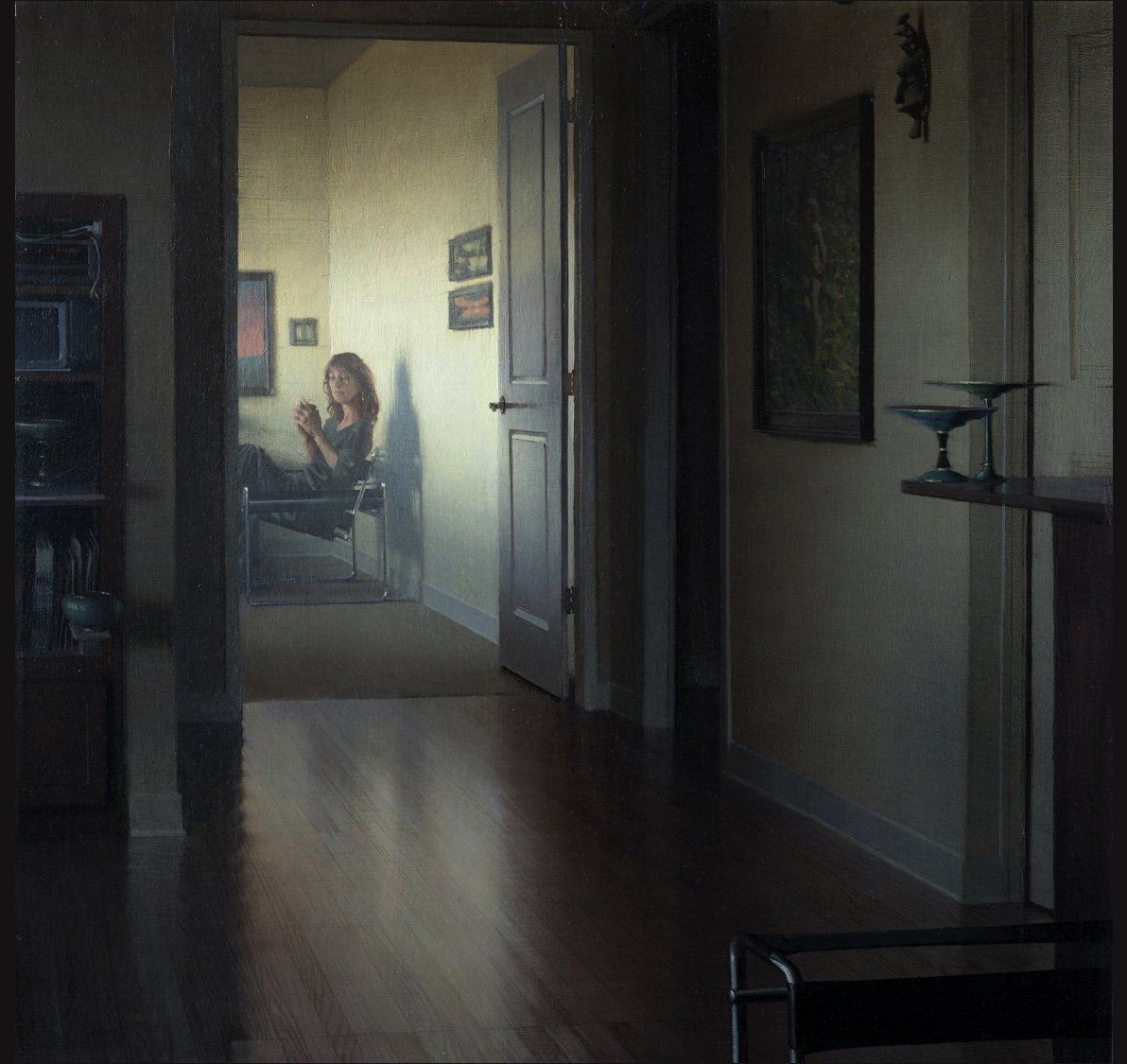
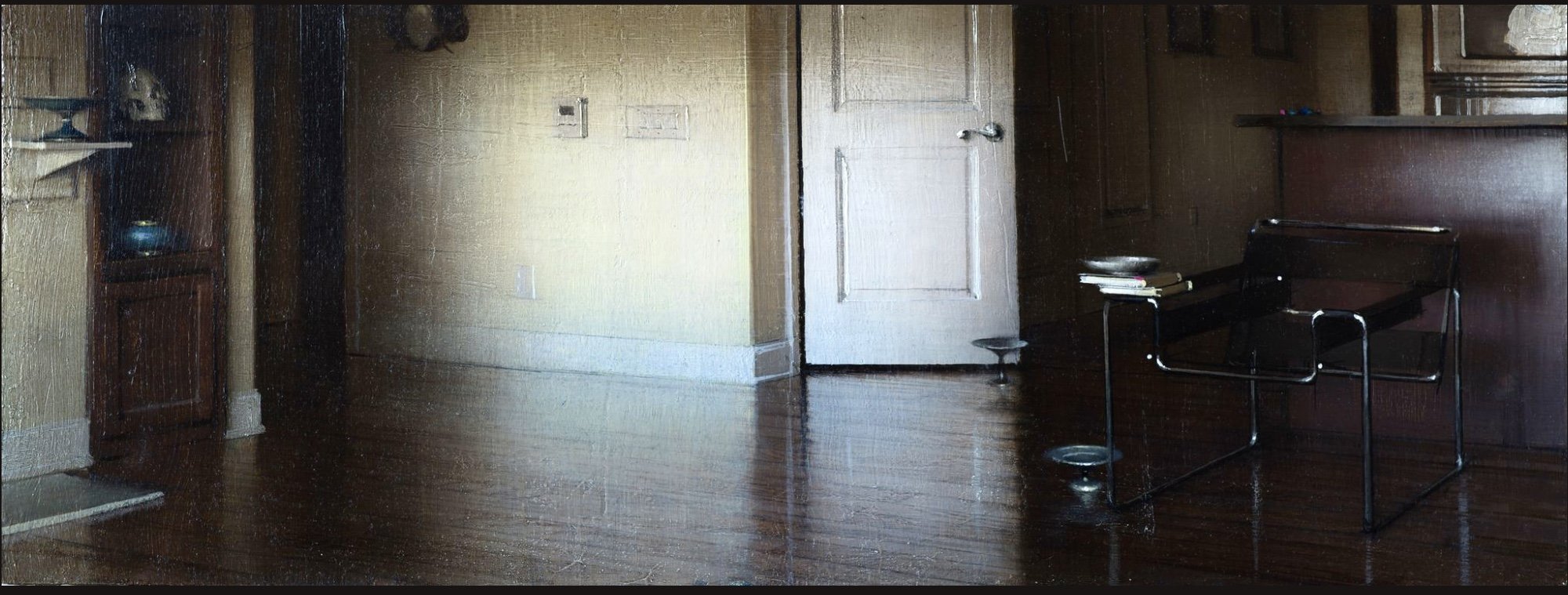
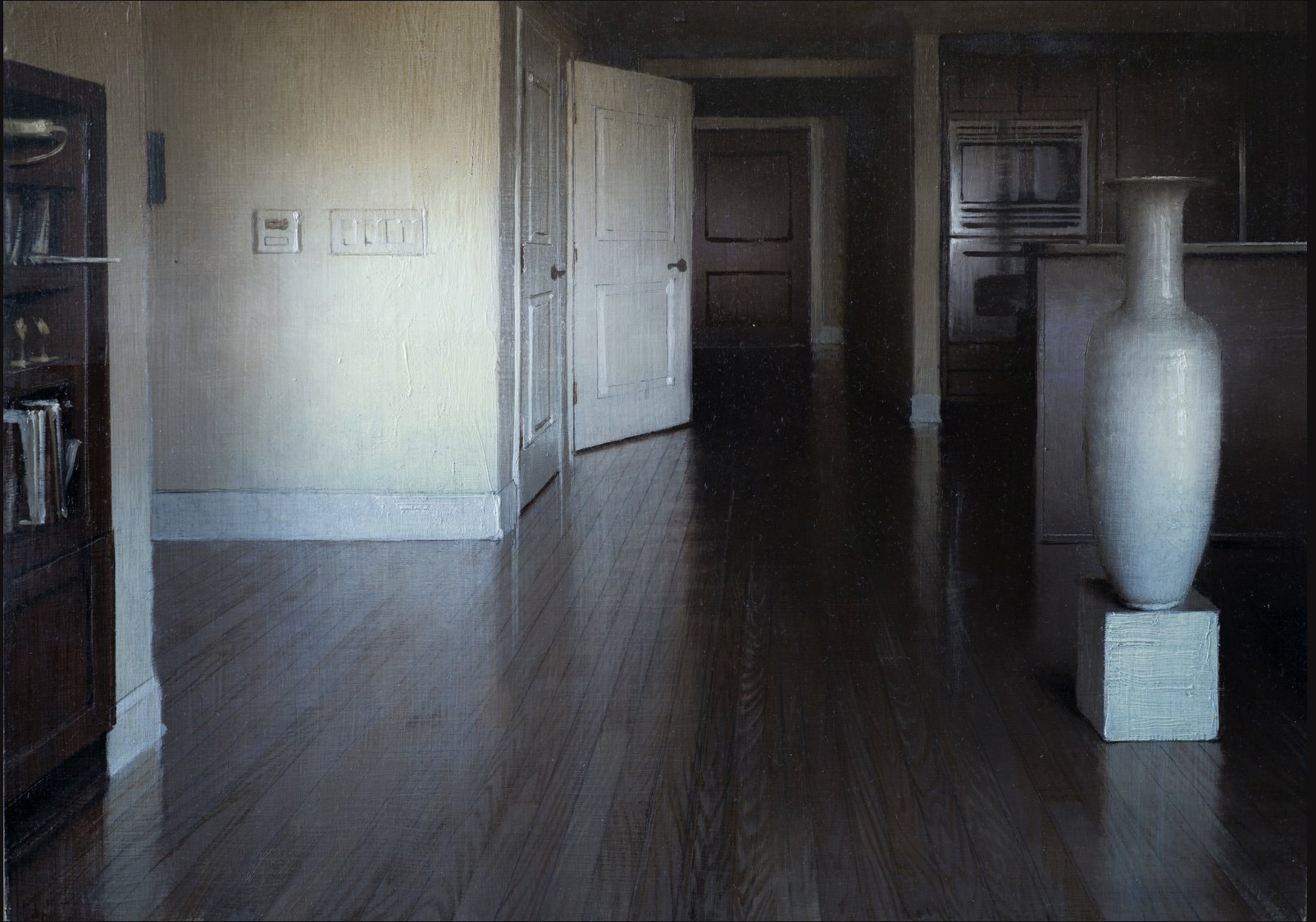
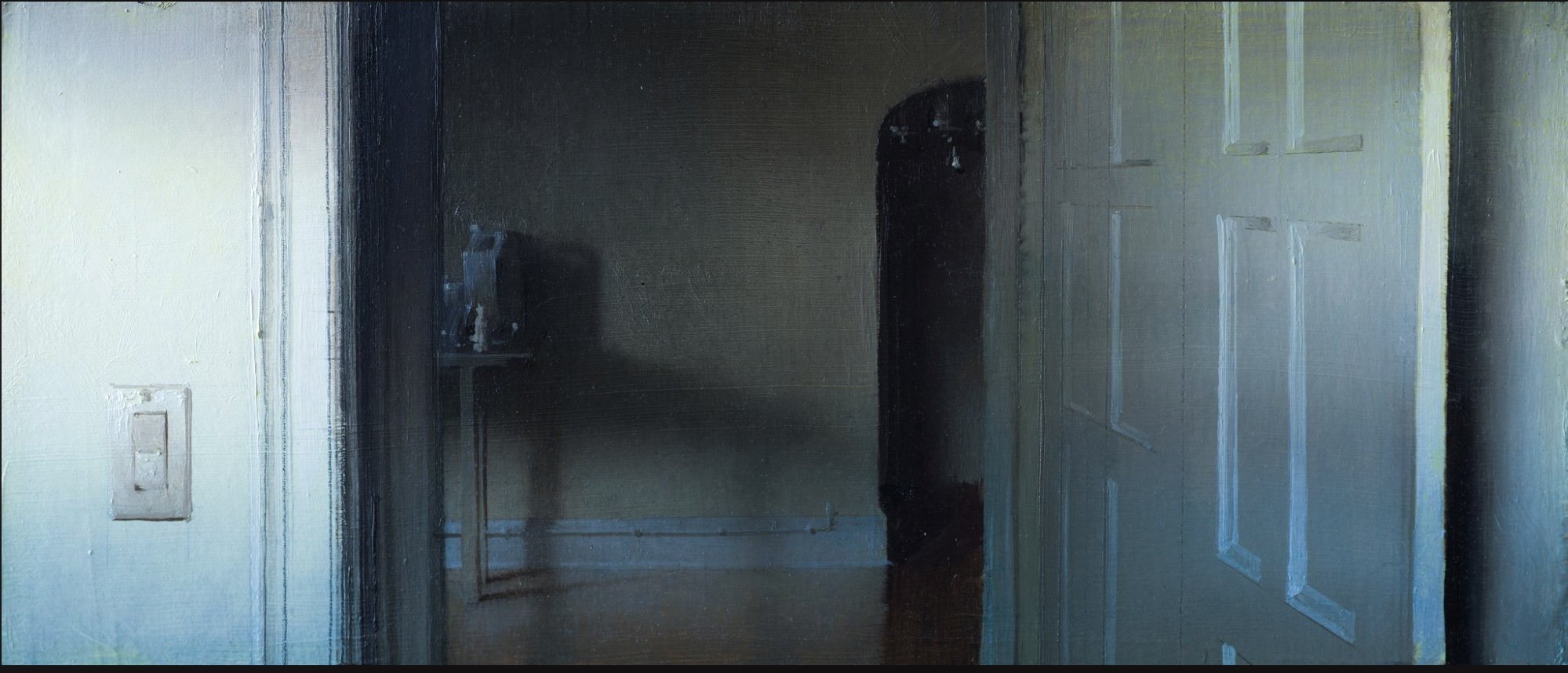
“Home” can evoke a multitude of feelings. Daniel Sprick’s interior scenes capture the complexity of emotions felt in the spaces most familiar to us. His paintings balance opposing concepts: rest and unrest; familiar and unfamiliar; freedom and constriction. They synthesize the themes presented throughout this exhibition, representing interior landscapes of Sprick’s daily life and artistic vision.
Together, these paintings illustrate a thematic unfolding of one’s relationship with home. The first works in this section consider the relationship between interior and exterior. Depictions of windows, mirrors, and paintings open into other worlds. Although most of Sprick’s interiors are devoid of human figures, dirty dishes and vacant couches serve as traces of the absent inhabitants in some of the paintings. The final works strip the home of ease and comfort. Open doors, empty countertops, and darkened rooms show the home as cold and unwelcoming, inhabited only by ghosts of memory.
Daniel Sprick’s interior scenes compel us to question our relationship to our homes. His paintings draw out our feelings and memories. Just as the Sprick’s paintings reveal something of the artist, our homes reflect us as well. What does “home” mean to you?
Sebastian Brady, Lexi Ferenzi, Patrick Lucas, and Anna McDonald
Landscape
From urban cityscapes, to exquisite sunsets, to dry riverbeds, Daniel Sprick crafts unique views of the world around us that emphasize an element of transience. Landscapes capture fleeting moments of nature, forever preserved in these paintings, whether it’s a car driving by a gas station or the glowing pink clouds of a sunset. With these images, Sprick provides the viewer the opportunity to look a little closer at these temporary moments, demonstrating the same principles of beauty, composition, color, and introspection found in his portraits, still lifes, and interiors.
In contrast to the cool stillness of Sprick’s interior scenes, his landscapes are noticeably warmer-toned, as in the explosion of pink sky seen in Chatfield. The artist paints smaller sketches on site and reworks them into larger compositions in the studio, capturing specific views at particular moments of exquisite beauty. Playing with the passage of time through light and shadow, Sprick often represents a specific quality of atmosphere that transports the viewer to a precise location. These places range from his hometown of Glenwood Springs, Colorado, to his current residence here in Denver.
Sprick’s landscape works encourage viewers to spend time looking at the careful compositions, which offer respite in their warmth, spaciousness, and contemplative mood.
Lauren Anuszewski, Sydney Barofsky, Sydney McCain, Claire Motsinger
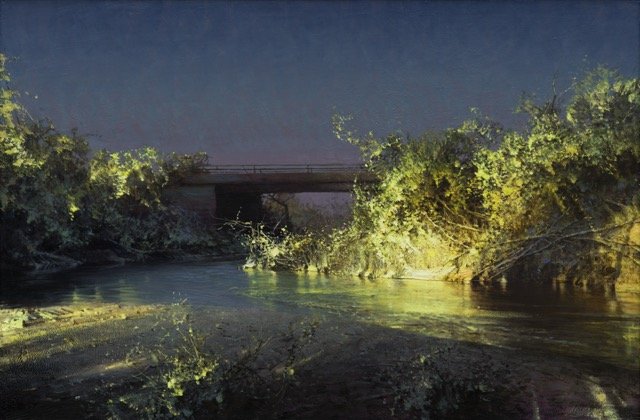
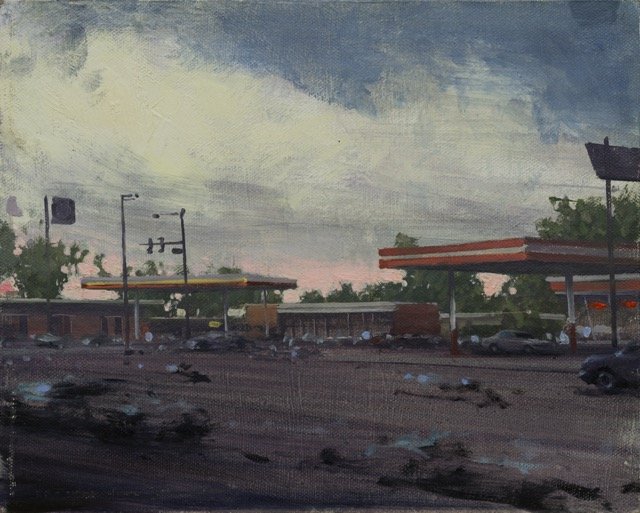
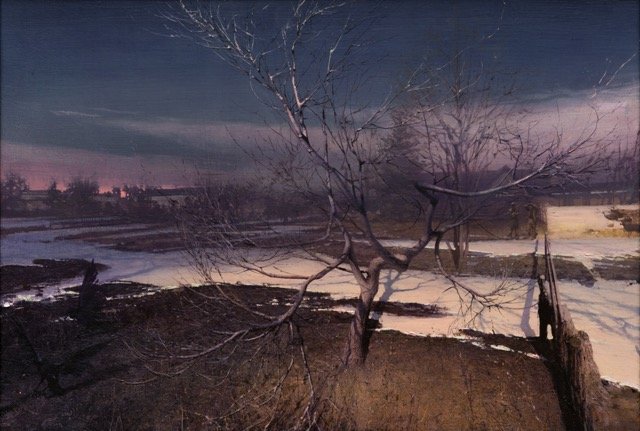
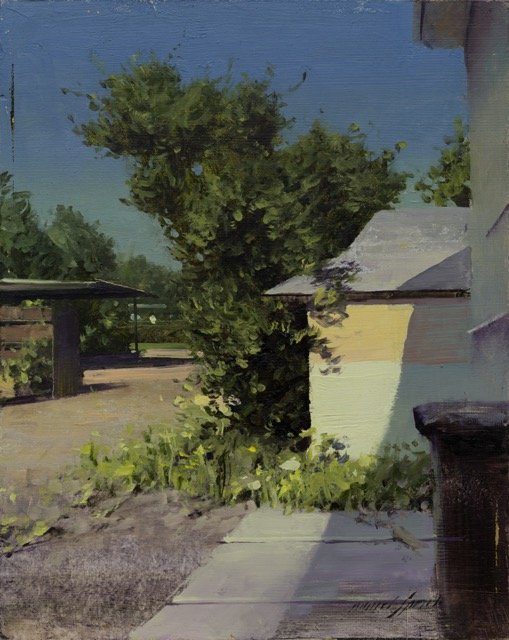
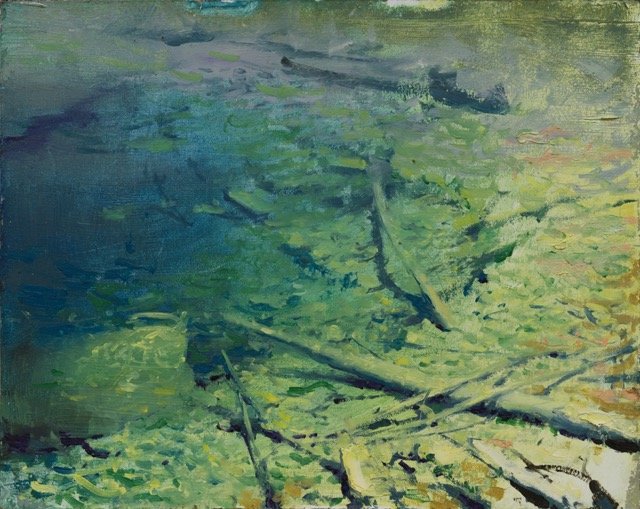
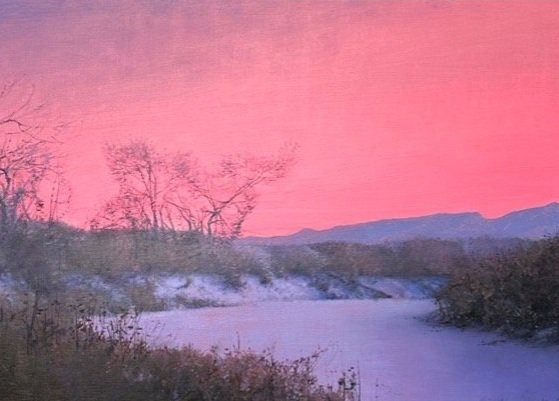
Still Life
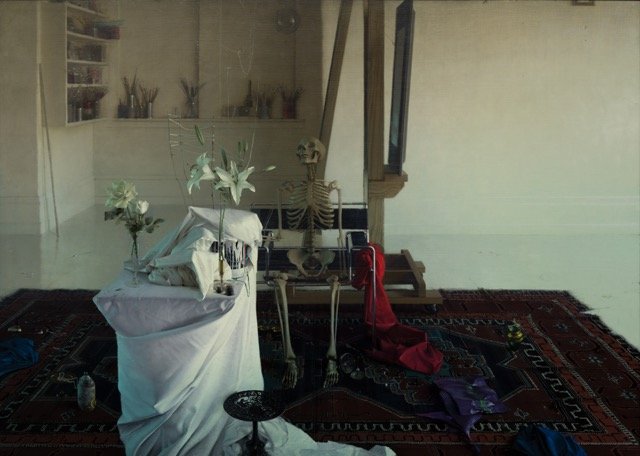

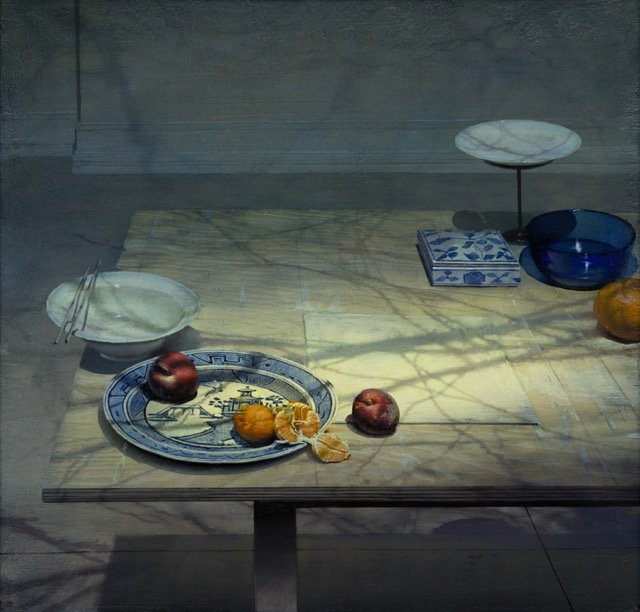
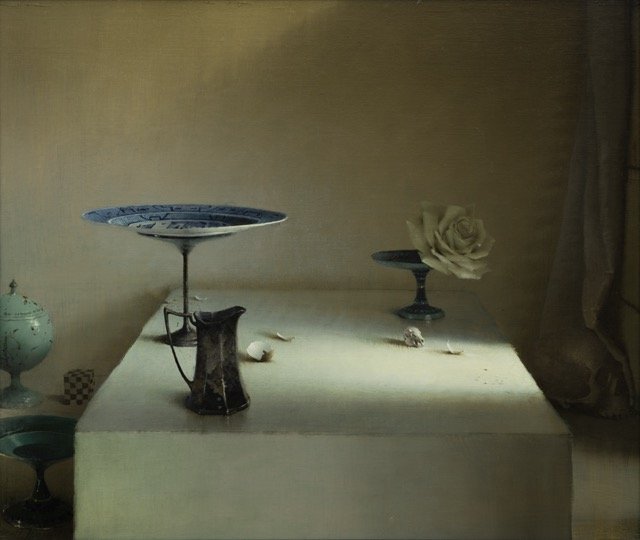
Since the seventeenth century, artists have displayed their technical prowess and artistic skills through the genre of still life, an aesthetic arrangement of objects, both natural and man-made. As a contemporary artist, Daniel Sprick’s use of this genre connects the past with the present, while also demonstrating his expertise as an oil painter. The stillness of each scene can be unsettling, forcing the viewers to question reality, distinguishing between what is natural and what is staged.
Within his still lifes, Sprick explores the contrast of deep shadows and light, (chiaroscuro), the tension of real versus unreal, and memento mori, the reminder of death and contemplation of mortality. Darkness exists within each work; large swathes of light create a sense of melancholy that highlights the emotional impact of the works. Each skeleton, dead flower, and half eaten fruit reminds us of the fragility of life and the existence of death. Using his skills as an oil painter, Daniel Sprick’s still life paintings encourage viewers to meditate on the beauty and fleeting essence of life, and the staged quality of our own personal realities.
As you move through the space, check in with yourself.
Notice your emotions as you walk through.
Try to spend time with the paintings and find small details.
Morgan Fleetwood, McKenna Gale, Allene Leak, Jordan Reed
Portraiture
Daniel Sprick’s portraiture explores duality and asks questions of life, emotion, and time.
Through depictions of himself and others, he brings together the inner and outer worlds. He explores the tenuous space between life and death and demonstrates the constant slippage between presence and absence. Sprick pairs these concepts and places us in a new world outside our own.
Spricks’s work has an ephemeral quality that highlights the temporary nature of existence. His intentional use of grays and blues instill an overarching sense of melancholy, and his utilization of light instills a ghostly and transient feeling in his portraits. The artist’s washed and blurred linework is particularly noticeable in the figures themselves, which often look like apparitions. In Sprick’s self-portrait on Mt. Vernon, for example, his lower half dissolves into the background. The unfinished edges of his figures remind us that they are not real, only illusions created from paint. By subverting the realism of his paintings, Sprick creates a tension between what is seen and unseen.
Alex Blom, James Grau, Andrew Nadeau, and Emily Oxford-Pickeral
